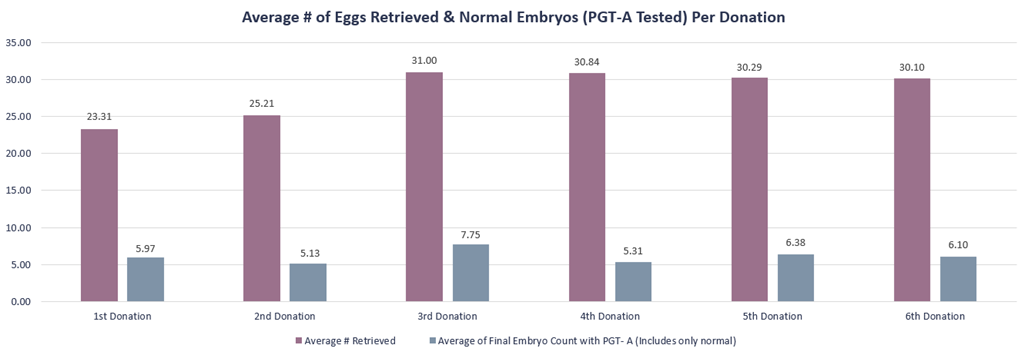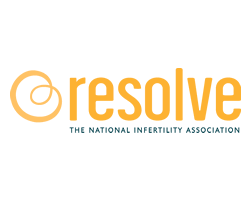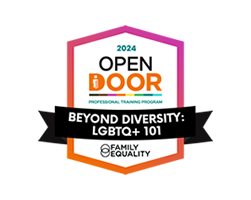Once you have decided to build your family through egg donation, the next major decision you will likely face is whether to do a fresh cycle with a donor through an agency or use frozen eggs purchased through a clinic or an egg bank. While egg banks will often market themselves as the more convenient, less costly option, there are many other factors to consider, some of which have the potential to impact your future children and your family many years down the road.
At Egg Donor & Surrogate Solutions (ED&SS), we are committed to ethical standards and doing what’s best for all parties involved – intended parents (IPs), donors, and the donor-conceived individuals who are created through egg donation. Below are some things to consider when choosing between fresh versus frozen.
Someone to guide you through the process
Our ED&SS team is dedicated to educating IPs and donors, as well as guiding and supporting both parties through the egg donation process. For IPs, this involves everything from helping you find the right donor for your family to navigating the legal agreement with your donor to coordinating with your clinic to ensure everything runs smoothly.
Number of eggs
When you choose a donor through an agency like ED&SS, you will receive all the eggs that are retrieved. Based on data from the past two years, 91% of Intended Parents retrieved 14 or more eggs. After PGT-A testing, families had an average of 6 normal embryos. The eggs can be fertilized immediately to create embryos for a fresh transfer, and the remaining embryos can be frozen for future family building. A fresh cycle is often the best option for IPs who want more than one child.
The chart below further illustrates the correlation between the number of donations a donor has completed and the average number of eggs retrieved, as well as the average number of normal embryos (PGT-A tested) produced per donation, based on data from our egg donation program over the past two years.
When using an egg bank, you will purchase frozen eggs in a “lot” or “cohort,” which usually includes six to eight mature eggs. The eggs must be thawed before they can be fertilized, which may reduce the number of embryos that make it to the blastocyst stage. Many egg banks will guarantee that at least one embryo will make it to the blastocyst stage, so frozen eggs may be a good option for families who only want one child.
Families with the same donor
At ED&SS, egg donors are allowed to complete a maximum of six cycles, the standard recommended by the ASRM, and the IPs receive all the eggs from a single cycle. This means that no more than six families will receive eggs from the same donor. With frozen banks, the eggs from a single cycle may be split between multiple IPs, increasing the number of families with the same donor, and thereby the number of potential donor siblings, exponentially.
Contact your donor
When working with ED&SS, you have the ability to customize your desired relationship with your donor both now and in the future. This can include an in-person meeting or video conference with your donor (facilitated by a member of our team), options for ongoing or future contact, and the option for your future children to meet the donor one day if that is their choice.
“When you go to a frozen egg bank, you lose the ability to have direct communication with your donor and control over things that may be important to you,” says Lauren Gaydos Duffer, a Dallas-based attorney who has been partnering with ED&SS for nearly 10 years to draft legal agreements for IPs and egg donors. “The protection an agency gives you cannot be replaced.”
Legal protection
ED&SS requires a direct agreement between IPs and donors to protect the legal interests and rights of both parties. Our team will guide you through the legal process and ensure that both you and your donor have legal representation from an attorney who specializes in third-party reproduction. The agreement will establish your parental rights and terminate any rights or responsibilities the donor has to the children created through egg donation. It will also define the guidelines for future contact and communication, such the donor keeping her contact information current with the Donor Sibling Registry.
With a frozen egg bank, egg donors are almost always exclusively anonymous, so you will not have the option to have a customized legal agreement with your chosen donor. You will sign consent forms with the egg bank, but it does not carry the same weight as a legal agreement between you and your donor.
Length of time
The timing for a fresh cycle is slightly longer than when using frozen eggs because medical screening and legal contracts must be completed before the donor begins the cycle. From match to retrieval, the average length of time for a fresh cycle is about four to five months. Donors at frozen egg banks have been prescreened, so the timing is shorter at about one to three months on average.
Investment
The typical cost for a fresh cycle at ED&SS is $20,000 to $30,000 with most families spending an average of $25,500 depending on the donor’s experience and location versus approximately $14,000 to $17,000 for a “cohort” of six to eight frozen eggs. If more than 1 batch is required of frozen eggs, you will spend as much if not more than a fresh cycle. There is also a risk your same donor is not available. These fees do not include costs associated with the fertility clinic for the donor’s medication and monitoring, egg retrieval and fertilization, and embryo transfer to the intended mother or a gestational surrogate.
Are you an intended parent trying to decide between a fresh versus frozen egg donation cycle to help you grow your family? You can learn more about our program at www.eggdonorsolutions.com or contact us at Match@CreateAHappyFamily.com. We would be happy to answer any questions you have and are honored to support you in your journey to parenthood.
We help Intended Parents Create Happy Families via Egg Donation & Surrogacy with the help of caring Egg Donors & Surrogates.
Donor sibling registry, egg donation process, Egg Donor Solutions, Intended Parents, Why use an agency?, Intended Parent Resources, Intended Parent Webinar, Getting started, Why our agency?, Selecting your donor.









